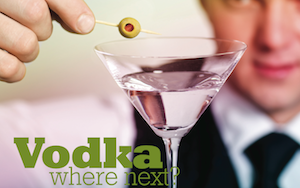What an impressive list of achievements. The world’s most fashionable and versatile spirit. A truly pioneering category with an amazing level of innovation and specialisation, spanning production and design. A comprehensive category that offers a range of choice, including various flavoured styles. And what’s more, vodka has travelled this distance in a relatively short period, only beginning to develop its current profile in the 1990s. But having achieved so much, where does the category go from here?
One long-standing trend that will undoubtedly continue is the phenomenal rate of launches, whether the aim is to become a niche brand and enjoy cult status, or to achieve super-stardom on the mainstream circuit.
“There are very low barriers to entry so the competition can come out of anywhere, anytime, very fast, so it’s a very dynamic and advancing category,” says Carmen d’Ascendis, managing director, vodka, Brown-Forman.
Two key destinations for all brands are the UK, the most mature market in Europe, and the US, which has the world’s biggest imported vodka sector. Moreover, success in the UK is a great launch pad for further success in the US, and vice-versa (not to mention numerous other markets).
“Vodka continues to grow in the US with constant innovation and a breadth of choice at various price points. The US is also far more developed than the UK, which still has a lot of potential as super-premium and ultra-premium have not developed in the UK and Europe as much as in the US, so there’s a huge opportunity for premiumisation,” says Edward Pilkington, global category director for vodka, rum and gin at Diageo.
Meanwhile, various emerging markets in South America include Brazil. Having an established spirits and cocktail culture provided a head start in Brazil, with aspirational consumers ready to buy into global brands.
“Brazil has been on a journey for quite some time and is now a significant-sized market with huge potential to keep growing. A lot more brands have entered the category, and it’s now moving from value to more prestige brands. Mexico also has a decent-sized vodka business with an opportunity to grow further and, while still quite small, we have also seen markets such as Argentina and Chile grow over the past three to four years,” says Pilkington.
Meanwhile, China is another focal point, with significant developments in the on-trade providing further prospects.
“Most bars in China are bottle bars, but shot bars/cocktail bars are now beginning to emerge, and that’s when unaged spirits really start to take off, as shot bars/cocktail bars are more accessible to consumers on a lower budget than bottle bars. Additionally, Chinese bartenders increasingly go to Europe, London or New York to see what’s happening then take those ideas back with them and create a buzz that they’re more cosmopolitan than the competition,” says d’Ascendis.




